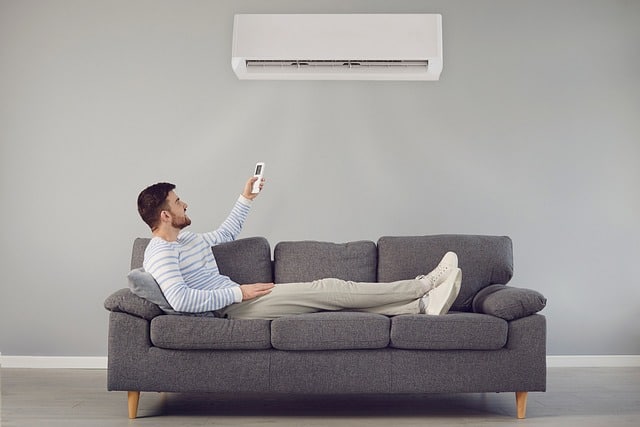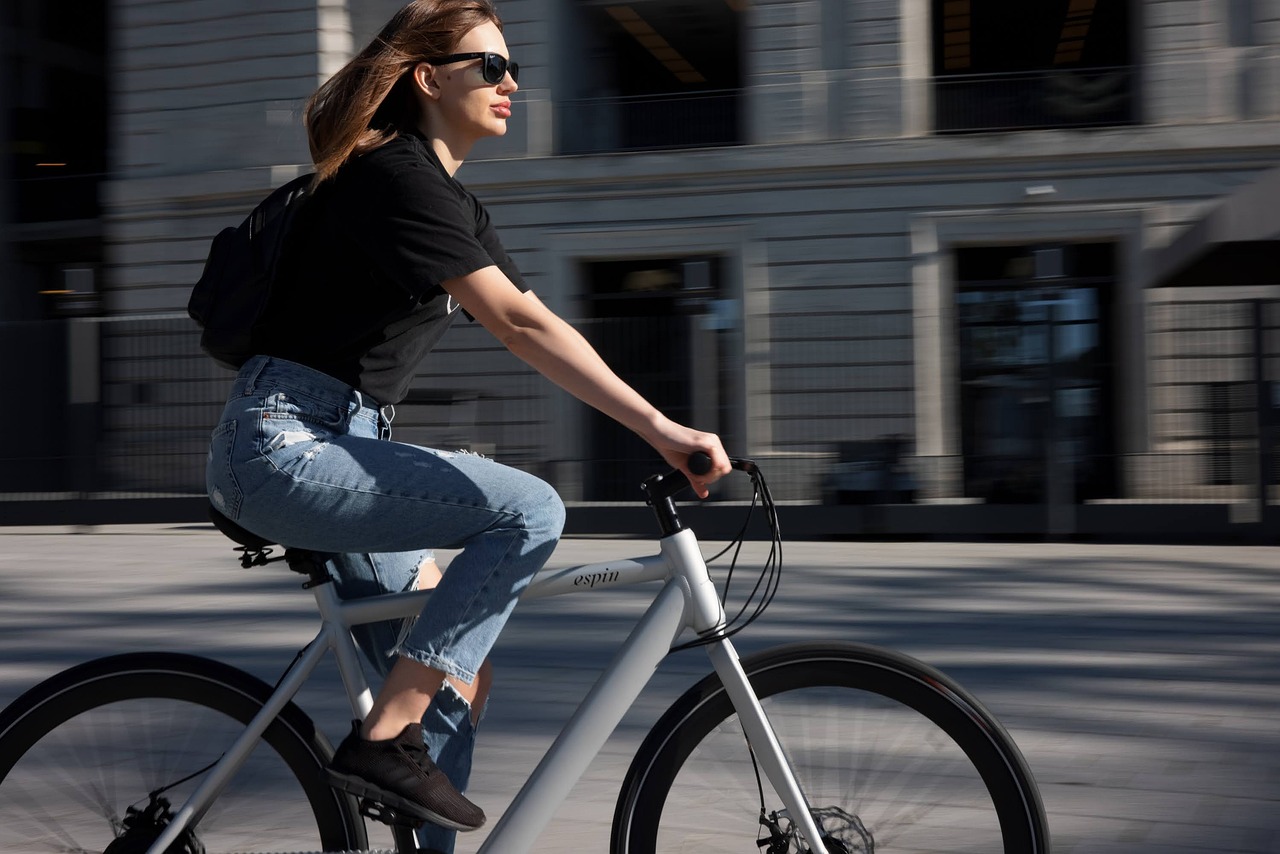Table of Contents
Taking It a Step Further
As global temperatures continue to rise due to climate change, the demand for cooling solutions is soaring. Air conditioning, once considered a luxury, is becoming a necessity in many parts of the world. However, the environmental impact of traditional air conditioning systems cannot be ignored. In response to this challenge, innovators and engineers are revolutionizing the industry with sustainable cooling solutions that are not only efficient but also eco-friendly. In this article, we will explore the latest innovations in eco-friendly AC systems and their promising contributions to a greener future.
The increasing global temperatures driven by climate change have created an urgent need for effective cooling solutions in regions around the world. What was once viewed as a luxury has now become a vital necessity for maintaining comfortable living conditions and ensuring human health and productivity, especially during scorching summers. However, the rise in demand for cooling comes with significant environmental consequences, primarily stemming from the energy consumption and refrigerants used in traditional air conditioning systems.
1. Energy Efficiency and Green Cooling Technologies: Innovators and engineers are leading a revolution in the cooling industry, focused on developing sustainable and eco-friendly alternatives to conventional AC systems. Energy-efficient cooling technologies are at the forefront of this transformation. These solutions employ advanced designs, such as variable-speed compressors and smart sensors, to optimize cooling performance while minimizing energy consumption. By reducing energy usage, these systems not only lower electricity bills but also decrease greenhouse gas emissions, contributing to a greener future.
2. Renewable Energy Integration: The synergy between cooling and renewable energy sources has immense potential. Sustainable cooling solutions can be powered by renewable energy, such as solar and wind power. Integrating air conditioning with clean energy sources not only reduces carbon emissions but also ensures access to cooling services even in off-grid or remote areas.
3. Eco-Friendly Refrigerants: Traditional AC systems often rely on refrigerants that have a high global warming potential (GWP). Eco-friendly refrigerants with lower GWPs are being developed and adopted, significantly reducing the environmental impact of cooling systems. These alternatives are not only more environmentally friendly but also more energy-efficient, contributing to a double benefit for the planet.
4. Passive Cooling and Natural Ventilation: In addition to technological innovations, sustainable cooling solutions include passive cooling strategies that rely on natural ventilation, shading and architectural designs to maintain comfortable indoor temperatures. These approaches are particularly effective in temperate climates and can reduce the need for energy-intensive cooling systems.
5. District Cooling: District cooling systems centralize cooling production, providing chilled water or air to multiple buildings, reducing energy consumption and greenhouse gas emissions. These systems are gaining popularity in urban areas as a sustainable way to meet the cooling needs of densely populated regions.
6. Cooling Efficiency Standards: Governments and organizations are increasingly recognizing the importance of regulating cooling efficiency standards. These standards incentivize the adoption of eco-friendly and energy-efficient cooling technologies, driving industry-wide improvements.
7. Public Awareness and Behavior Change: Building awareness about responsible cooling practices is crucial. Encouraging behaviors such as setting thermostats to eco-friendly temperatures, maintaining HVAC systems and reducing unnecessary cooling can lead to significant energy savings and a smaller carbon footprint.
In conclusion, the urgent need for cooling solutions in a warming world has spurred innovation and progress in the quest for sustainable and eco-friendly alternatives to traditional air conditioning. These innovations are not only essential for mitigating the environmental impact of cooling but also for ensuring access to cooling services while safeguarding the planet. By embracing these advancements, we can pave the way for a greener and more sustainable future, where cooling and environmental responsibility go hand in hand.
For additional details, consider exploring the related content available here Governor Hochul and Mayor Adams Announce $70 Million Initial …

Delving Deeper
The Green Refrigerants RevolutionTraditional air conditioners rely on hydrofluorocarbon (HFC) refrigerants, which are notorious for their high global warming potential. Eco-friendly AC systems are now shifting towards alternative refrigerants such as hydrofluoroolefins (HFOs) and natural refrigerants like hydrocarbons, ammonia and carbon dioxide. These alternatives have a significantly lower environmental impact and contribute to reducing greenhouse gas emissions.
“The Green Refrigerants Revolution: Traditional air conditioning systems have long relied on hydrofluorocarbon (HFC) refrigerants, which, despite their effective cooling properties, come with a significant environmental drawback—high global warming potential. However, a transformative shift is underway in the world of air conditioning as manufacturers and consumers increasingly embrace eco-friendly alternatives. Let’s explore this remarkable transition toward green refrigerants and its far-reaching implications for environmental sustainability:
HFCs and Global Warming: HFC refrigerants, while efficient at cooling, are potent greenhouse gases with a considerable global warming potential. Their release into the atmosphere contributes to the depletion of the ozone layer and exacerbates climate change, making them a concerning choice for cooling technology.
Eco-Friendly Alternatives: The shift toward eco-friendly air conditioning systems centers on the adoption of alternative refrigerants. These include hydrofluoroolefins (HFOs) and natural refrigerants such as hydrocarbons (propane and isobutane), ammonia and carbon dioxide (CO2). These alternatives have gained prominence for their significantly lower environmental impact.
Reduced Greenhouse Gas Emissions: The primary advantage of eco-friendly refrigerants lies in their reduced greenhouse gas emissions. HFOs, for example, have a much lower global warming potential than HFCs, making them a more sustainable choice. Natural refrigerants, on the other hand, have negligible or even zero global warming potential, representing a quantum leap in sustainability.
Ozone-Friendly: In addition to their lower global warming potential, many of these alternative refrigerants are ozone-friendly, meaning they do not harm the ozone layer. This dual benefit addresses multiple environmental concerns simultaneously.
Government Regulations: Recognizing the environmental impact of HFCs, governments and international organizations have enacted regulations to phase out or restrict their use. These regulations are driving the adoption of eco-friendly refrigerants in new air conditioning systems and the retrofitting of existing units.
Energy Efficiency: Eco-friendly refrigerants often go hand in hand with energy-efficient air conditioning systems. These systems are designed to maximize cooling performance while minimizing energy consumption, further reducing their carbon footprint.
Consumer Choice: Consumers are increasingly conscious of the environmental impact of their choices, including the cooling systems they use. The availability of air conditioners that utilize green refrigerants allows consumers to make eco-conscious decisions without compromising comfort.
Global Impact: The transition to green refrigerants has a global impact, helping reduce greenhouse gas emissions and mitigate climate change effects. It aligns with international efforts to combat global warming and enhance environmental sustainability.
Innovation and Research: Ongoing research and innovation in refrigeration technology continue to expand the range of eco-friendly refrigerants and improve their performance. This innovation ensures that sustainable cooling solutions remain at the forefront of technological advancements.
In conclusion, the shift toward eco-friendly refrigerants represents a pivotal moment in the quest for environmental sustainability. It underscores the importance of reducing the environmental footprint of cooling technology while maintaining efficient and effective cooling solutions. As the adoption of green refrigerants continues to grow, the air conditioning industry is playing a critical role in combating climate change and protecting the planet for future generations.”
To delve further into this matter, we encourage you to check out the additional resources provided here: The Efficiency of Natural Gas in Cooling Exploring New Borders
Additional Considerations
Energy Efficiency is KeySustainable cooling solutions prioritize energy efficiency. Innovations in the industry are leading to the development of AC systems that consume less power while providing optimal cooling performance. High Seasonal Energy Efficiency Ratio (SEER) and Energy Efficiency Ratio (EER) ratings are becoming standard, ensuring that these systems save energy and lower operating costs.
Energy efficiency is the linchpin of sustainable cooling solutions and it plays a pivotal role in shaping the future of the HVAC industry. Let’s delve deeper into the significance of energy efficiency in the realm of cooling and explore how innovative technologies are driving advancements in this critical area:
Environmental Impact: Sustainable cooling is closely linked to environmental stewardship. Energy-efficient cooling systems have a smaller carbon footprint, as they consume less electricity. This translates to reduced greenhouse gas emissions, contributing to efforts to combat climate change and minimize the environmental impact of HVAC operations.
Resource Conservation: Energy-efficient cooling systems align with the responsible use of resources. By consuming less power, they reduce the strain on energy infrastructure and help preserve valuable natural resources, such as fossil fuels and freshwater used in power generation.
Operational Cost Savings: Efficiency isn’t just an environmental consideration; it’s also a practical one. Cooling systems with high Seasonal Energy Efficiency Ratio (SEER) and Energy Efficiency Ratio (EER) ratings translate into lower energy bills. Over time, the cost savings can be substantial, offsetting the initial investment in an energy-efficient system.
Improved Technology: The HVAC industry continues to innovate, developing cutting-edge technologies that enhance cooling efficiency. Variable-speed compressors, smart thermostats and advanced control systems are examples of innovations that optimize cooling performance and reduce energy consumption. These technologies allow homeowners and businesses to achieve precise temperature control while conserving energy.
Regulatory Standards: Energy efficiency standards and regulations are evolving to promote sustainable cooling practices. Governments and industry organizations are setting higher efficiency standards for cooling systems, pushing manufacturers to develop more eco-friendly and efficient products. Compliance with these standards ensures that consumers have access to greener cooling options.
Return on Investment: Investing in energy-efficient cooling systems can offer an attractive return on investment. While the upfront costs may be slightly higher, the long-term energy savings often outweigh the initial expenditure. Additionally, some regions offer incentives, rebates or tax credits for installing energy-efficient HVAC systems, further improving the financial outlook.
Adaptive Cooling: Smart cooling solutions are gaining prominence. These systems use artificial intelligence and sensors to adapt cooling operations based on real-time conditions and occupancy. They can adjust cooling levels, ventilation rates and airflow to maximize efficiency while maintaining comfort.
Longevity and Reliability: Energy-efficient cooling systems are often built with quality and durability in mind. Their components are designed to withstand the rigors of frequent use, resulting in longer lifespans and reduced maintenance requirements. This reliability ensures that the system continues to operate efficiently over time.
Customized Solutions: Sustainable cooling isn’t one-size-fits-all. Manufacturers are offering a range of cooling solutions tailored to different needs and budgets. This customization allows consumers to select systems that align with their specific efficiency goals and preferences.
In summary, energy efficiency is the cornerstone of sustainable cooling solutions and it represents a win-win scenario. It reduces environmental impact, lowers operational costs and encourages the adoption of innovative technologies. As energy-efficient cooling systems become increasingly accessible and affordable, they are poised to reshape the way we cool our homes and businesses, ushering in a greener and more efficient era of HVAC technology.
Should you desire more in-depth information, it’s available for your perusal on this page: The Future of Cooling – Analysis – IEA

Moving Beyond the Basics
Solar-Powered AC SystemsSolar-powered air conditioning systems are gaining popularity as renewable energy technology advances. These systems use photovoltaic panels to generate electricity from sunlight, reducing the reliance on grid power. During the hottest months, when the sun shines brightest, these systems can provide efficient cooling while minimizing their carbon footprint.
Solar-Powered AC Systems: The rise of solar-powered air conditioning systems represents a significant leap forward in the realm of sustainable and energy-efficient cooling solutions. As renewable energy technology continues to advance, these systems are gaining popularity due to their environmentally friendly attributes and potential for long-term cost savings.
Here’s a more in-depth exploration of the benefits and workings of solar-powered AC systems:
Harnessing Solar Energy: Solar-powered AC systems utilize photovoltaic (PV) panels to harness the sun’s energy and convert it into electricity. These panels are typically installed on rooftops or in sunny outdoor areas, where they are exposed to direct sunlight.
Reduced Grid Dependence: One of the primary advantages of these systems is their ability to reduce reliance on grid power. During sunny days, they can generate a significant portion of the electricity needed to operate the air conditioning system, effectively lowering your energy bills.
Efficiency in Hot Weather: Solar-powered AC systems are particularly efficient during the hottest months when the sun shines the brightest. This synergy between high-demand cooling and ample sunlight ensures that the system operates at its peak performance when you need it the most.
Energy Storage: To maintain cooling when the sun isn’t shining, some solar-powered AC systems incorporate energy storage solutions, such as batteries. These batteries store excess energy generated during the day for use during the night or on cloudy days, ensuring uninterrupted cooling.
Carbon Footprint Reduction: Solar-powered AC systems significantly reduce the carbon footprint associated with traditional cooling methods. By relying on clean and renewable solar energy, they help combat greenhouse gas emissions and contribute to a more sustainable future.
Cost Savings: While the initial investment in solar-powered AC systems can be higher than traditional systems, they often pay for themselves over time through energy savings and potential government incentives or tax credits for renewable energy installations.
Reliability and Durability: Solar-powered AC systems are designed for durability and reliability. With fewer moving parts and a focus on efficiency, they tend to require less maintenance than traditional AC units.
Environmental Impact: By adopting solar-powered cooling solutions, individuals and businesses can make a meaningful contribution to environmental preservation and a reduced ecological footprint, aligning with global efforts to combat climate change.
In conclusion, solar-powered air conditioning systems represent a sustainable and forward-thinking approach to cooling. As technology continues to advance and solar panel costs decrease, these systems are becoming more accessible and attractive for those seeking to reduce their energy bills and minimize their environmental impact. As the world transitions to cleaner energy sources, solar-powered AC is poised to play a crucial role in creating a more sustainable and comfortable future.
If you’d like to dive deeper into this subject, there’s more to discover on this page: Green Building Standards and Certification Systems | WBDG …

Clarification
Heat Pump TechnologyHeat pumps are versatile eco-friendly cooling solutions that can both heat and cool indoor spaces efficiently. By harnessing the temperature differential between the indoor and outdoor environments, heat pumps can move heat from one place to another with minimal energy consumption, making them a sustainable alternative to traditional AC units.
Heat pump technology represents a significant leap in the world of cooling and heating solutions. Let’s delve deeper into the capabilities and advantages of heat pump systems:
1. Year-Round Comfort: One of the most striking features of heat pumps is their year-round versatility. In addition to cooling your home during the summer, they seamlessly transition into heating mode during the colder months. This dual functionality ensures that your indoor environment remains comfortable and consistent throughout the seasons, eliminating the need for separate heating and cooling systems.
2. Energy Efficiency: Heat pumps are renowned for their exceptional energy efficiency. Unlike traditional heating systems that generate heat through combustion, heat pumps transfer heat from one place to another using a refrigeration cycle. This method requires significantly less energy, resulting in lower utility bills and reduced environmental impact.
3. Environmental Sustainability: Heat pumps are an eco-friendly choice. By relying on the temperature differential between the indoor and outdoor environments, they efficiently move heat without burning fossil fuels, reducing greenhouse gas emissions. This makes heat pumps a sustainable and responsible option for environmentally conscious individuals.
4. Cost Savings: The energy efficiency of heat pumps translates into substantial cost savings over time. While the initial investment may be slightly higher than traditional systems, the long-term reduction in energy bills and lower maintenance expenses make them a financially wise choice.
5. Consistent Comfort: Heat pumps provide consistent heating and cooling throughout your home. They distribute conditioned air evenly, eliminating hot or cold spots. This uniform temperature control enhances comfort and ensures that every room in your home remains inviting and pleasant.
6. Zoning Capabilities: Heat pump systems can be equipped with zoning capabilities, allowing you to customize the temperature settings in different areas of your home. This personalized approach optimizes comfort and energy efficiency by directing conditioned air only where it’s needed.
7. Improved Indoor Air Quality: Many heat pump systems incorporate advanced air filtration and purification features. These features help remove allergens, pollutants and airborne particles, promoting better indoor air quality and a healthier living environment.
8. Quiet Operation: Heat pumps are known for their quiet operation. They generate minimal noise, ensuring a peaceful and tranquil indoor environment. This is particularly beneficial in bedrooms, offices and other spaces where noise levels can be a distraction.
9. Durability: Heat pump systems are built to last. With proper maintenance, they can provide reliable performance for many years. Their durability and longevity contribute to long-term savings and reduced environmental impact by minimizing the need for replacements.
10. Smart Home Integration: Many modern heat pump systems can be integrated into smart home ecosystems. This allows you to control and monitor your heating and cooling remotely through smartphone apps or voice commands, adding convenience and flexibility to your daily routine.
In summary, heat pump technology offers a versatile and eco-friendly solution for year-round comfort. With their energy efficiency, environmental sustainability and numerous advantages, heat pumps have become a popular choice for those seeking optimal indoor comfort without compromising on cost savings or environmental responsibility. Whether you’re looking to upgrade your existing HVAC system or install a new one, heat pumps present a compelling and future-ready option.
Should you desire more in-depth information, it’s available for your perusal on this page: The Future of Cooling – Analysis – IEA

Exploration
Innovative Airflow ManagementInnovations in airflow management are improving the distribution of cool air within indoor spaces. Smart vents, zoned cooling and advanced ductwork design optimize air circulation, ensuring that every corner of your home or office receives uniform cooling. This not only enhances comfort but also reduces the energy required to maintain desired temperatures.
The innovative advancements in airflow management are transforming the way we experience indoor comfort and are redefining the efficiency of cooling systems. Let’s delve deeper into these innovations and their far-reaching benefits:
Smart Vents: Smart vents are revolutionizing how air is distributed throughout your living or working space. These intelligent vents can be programmed to open or close based on temperature preferences and occupancy patterns. By dynamically adjusting airflow to different rooms, they ensure that each area receives the right amount of cooling. This level of precision not only optimizes comfort but also minimizes energy wastage in unoccupied spaces, leading to substantial energy savings.
Zoned Cooling: Zoned cooling takes customization to the next level. With zoned systems, your home or office is divided into distinct climate zones, each with its thermostat and controls. This means you can set different temperatures for various areas, tailoring the cooling to match individual preferences and occupancy. Zoned cooling ensures that no energy is wasted on overcooling or overheating unused spaces, promoting both comfort and energy efficiency.
Advanced Ductwork Design: The design of your ductwork plays a crucial role in efficient cooling. Innovations in ductwork design focus on minimizing leaks and optimizing airflow pathways. By reducing air leakage and ensuring that cool air is evenly distributed, these designs enhance the overall efficiency of your cooling system. As a result, your AC unit doesn’t have to work as hard, reducing energy consumption and lowering utility bills.
Enhanced Air Circulation: Proper airflow management isn’t just about cooling; it’s also about air quality. These innovations ensure that fresh, filtered air is distributed effectively throughout your space. Improved air circulation helps remove airborne pollutants, allergens and humidity, creating a healthier indoor environment that supports physical and mental wellness.
Energy Savings: Perhaps one of the most significant advantages of these innovations is the potential for energy savings. When your cooling system operates with precision and distributes air efficiently, it consumes less energy to achieve and maintain your desired temperatures. This translates into lower energy bills and a reduced environmental impact, aligning with sustainability goals.
In summary, innovations in airflow management are transforming the way we experience indoor comfort while delivering remarkable energy efficiency gains. The combination of smart vents, zoned cooling, advanced ductwork design and enhanced air circulation ensures that you enjoy a comfortable, healthy and energy-efficient indoor environment. These innovations not only elevate your quality of life but also contribute to a more sustainable and environmentally responsible way of living.
Should you desire more in-depth information, it’s available for your perusal on this page: The Efficiency of Natural Gas in Cooling Exploring New Borders
Further Insights
AI and Smart ThermostatsArtificial intelligence (AI) is being integrated into eco-friendly AC systems, allowing for more precise temperature control. Smart thermostats can learn your preferences and adapt cooling settings accordingly, reducing energy waste. They also enable remote control, so you can adjust your AC system from your smartphone to minimize energy consumption when you’re away.
The integration of artificial intelligence (AI) into eco-friendly AC systems represents a significant leap forward in both convenience and energy efficiency. Smart thermostats, powered by AI algorithms, are revolutionizing the way we manage indoor climate control.
One of the most compelling aspects of AI-driven AC systems is their ability to provide precise temperature control. Unlike traditional thermostats that rely on static settings, smart thermostats continuously analyze data and learn from your preferences. They adapt cooling settings in real-time, ensuring that your home remains at the ideal temperature without wasting energy on unnecessary cooling. This not only enhances your comfort but also translates into substantial energy savings over time.
Moreover, these intelligent systems are equipped with sensors that can detect when the house is empty. When you leave for work or a vacation, your smart thermostat will automatically adjust the temperature to an energy-saving mode. This proactive approach minimizes energy consumption and reduces your environmental footprint. And the best part is that you can control these settings remotely through a smartphone app. Whether you’re coming home earlier than expected or need to adjust the temperature for a family member or guest, you have full control at your fingertips.
Furthermore, AI-driven AC systems often provide detailed insights into your energy usage patterns. They can generate reports and suggest ways to optimize your cooling strategy further. For instance, they might recommend minor adjustments to your schedule or offer insights into how to reduce peak energy consumption during the hottest parts of the day.
In essence, the combination of AI and smart thermostats is not only making our lives more convenient but also contributing significantly to environmental sustainability. These systems empower homeowners to take a proactive stance in reducing their energy consumption and carbon footprint while enjoying personalized, efficient and cost-effective cooling solutions. As the technology continues to evolve, we can expect even more innovative features that make our homes smarter, more comfortable and environmentally friendly.
For a comprehensive look at this subject, we invite you to read more on this dedicated page: Partners announce new ambition on sustainable cooling for COP28

Going a Bit Further
Longer Lifespan and RecyclabilityEco-friendly AC systems are designed with longevity in mind. Durable materials and components mean fewer units end up in landfills. Additionally, manufacturers are increasingly focusing on making their products recyclable, contributing to a circular economy and reducing waste.
Investing in eco-friendly AC systems is not only a responsible choice for the environment but also a wise financial decision in the long run. Here’s why longer lifespan and recyclability are two crucial factors that make these systems a sustainable choice:
Environmental Stewardship: Eco-friendly AC systems are built to last. Their durability, stemming from high-quality materials and components, ensures a longer operational life. This longevity translates to fewer systems being discarded prematurely, which is a significant win for the environment. By minimizing the number of air conditioning units ending up in landfills, we reduce the environmental impact associated with their disposal.
Economic Benefits: Longer lifespan equates to fewer replacements and lower total cost of ownership. While eco-friendly systems might have a higher initial purchase price, their extended service life more than compensates for this investment. Homeowners and businesses alike benefit from reduced maintenance and replacement costs over time.
Energy Efficiency: Eco-friendly AC systems are often designed with energy efficiency in mind. Their advanced technologies and sustainable features help reduce energy consumption. This not only lowers utility bills but also contributes to a reduced carbon footprint. It’s a win-win situation for both your wallet and the planet.
Recyclability: Manufacturers are increasingly committed to sustainability, designing their products to be recyclable at the end of their lifespan. This approach aligns with the principles of a circular economy, where products are reused, refurbished or recycled, rather than discarded. By choosing eco-friendly AC systems, you support this environmentally conscious approach to product life cycles.
Reduced Resource Depletion: Sustainable HVAC systems rely on responsible sourcing of materials and efficient resource utilization during production. This helps reduce the depletion of natural resources, preserving them for future generations. It’s a vital step towards creating a more sustainable and balanced ecosystem.
Government Incentives: Many governments offer incentives and rebates for eco-friendly HVAC installations. These financial incentives can further offset the initial cost and make the switch to sustainable systems even more attractive.
Corporate Responsibility: Businesses that prioritize eco-friendly practices not only benefit the environment but also enhance their reputation as socially responsible entities. This can resonate positively with customers, clients and stakeholders, contributing to brand loyalty and business growth.
In conclusion, eco-friendly AC systems are more than just a green choice; they are a sound investment in the environment, your finances and your long-term well-being. Their longer lifespan and recyclability are key attributes that align with the principles of sustainability and responsible consumption, ultimately benefitting both you and the planet.
Don’t stop here; you can continue your exploration by following this link for more details: 25 Eco-Friendly Hotel Ideas for Sustainable Properties | Cvent Blog

Key Points
The pursuit of sustainable cooling solutions is not just an environmental imperative; it’s a practical necessity in an era of climate change. Innovations in eco-friendly AC systems are making it possible to enjoy indoor comfort without compromising the planet’s health. From green refrigerants to energy-efficient technologies, these innovations are paving the way for a future where cooling is both sustainable and efficient. As consumers and industries alike embrace these innovations, we move one step closer to a cooler, greener and more sustainable world.
“The urgency of adopting sustainable cooling solutions cannot be overstated, as we navigate the challenges of a changing climate. Beyond being an environmental imperative, it has become a practical necessity in the face of rising global temperatures. The evolution of eco-friendly AC systems represents a significant leap forward in our quest to strike a balance between human comfort and environmental responsibility. Here’s how these innovations are shaping a more sustainable future:
Low-impact Refrigerants: Traditional air conditioning systems have long relied on refrigerants with high global warming potential (GWP). Eco-friendly AC systems are now turning to low-GWP or even zero-GWP refrigerants that have a minimal impact on the environment. This shift not only reduces the carbon footprint but also helps mitigate the potential release of harmful greenhouse gases.
Energy Efficiency: Sustainable cooling solutions prioritize energy efficiency. Advanced technologies, such as variable-speed compressors and smart thermostats, optimize energy consumption, ensuring that cooling is both effective and eco-friendly. This not only saves on energy bills but also reduces overall electricity demand, contributing to grid stability.
Solar-Powered Cooling: Solar-powered air conditioning systems harness the abundant energy of the sun to cool indoor spaces. By relying on renewable energy sources, these systems significantly reduce reliance on fossil fuels and decrease greenhouse gas emissions associated with cooling.
Heat Recovery: Innovative heat recovery systems in some eco-friendly AC units capture waste heat generated during the cooling process and repurpose it for other household or industrial applications, such as water heating or space heating. This dual functionality enhances energy efficiency and minimizes waste.
Sustainable Materials: Eco-conscious AC systems use sustainable materials in their construction. These materials are not only durable but also have a lower environmental impact, from production to disposal.
Longevity and Maintenance: Sustainable cooling systems are designed for longevity and ease of maintenance. They are built to last and often come with warranties that extend for several years. This reduces the need for frequent replacements and reduces the environmental impact of manufacturing and disposing of old units.
Consumer Awareness: As consumers become more environmentally aware, there is a growing demand for eco-friendly AC systems. This demand encourages manufacturers to invest in sustainable technologies and practices, creating a market that drives innovation.
Government Initiatives: Governments worldwide are recognizing the importance of sustainable cooling. They are introducing regulations and incentives to encourage the adoption of energy-efficient and environmentally friendly cooling solutions. This not only benefits consumers but also contributes to national and global climate goals.
In embracing these innovations and prioritizing sustainable cooling, we are taking significant steps toward a cooler, greener and more sustainable world. It’s a collective effort involving individuals, industries and policymakers to ensure that indoor comfort and environmental responsibility go hand in hand. As we continue down this path, we can look forward to a future where cooling is efficient, accessible and in harmony with the planet we call home.”
To expand your knowledge on this subject, make sure to read on at this location: Green Building Standards and Certification Systems | WBDG …

More links
Looking for more insights? You’ll find them right here in our extended coverage: Energy-Efficient AC Systems for Remote and Off-Grid Locations
